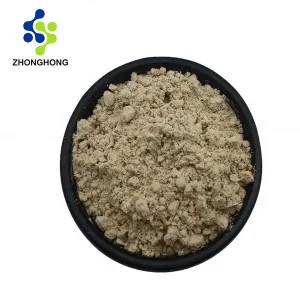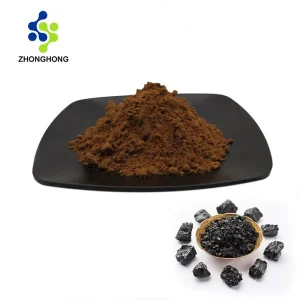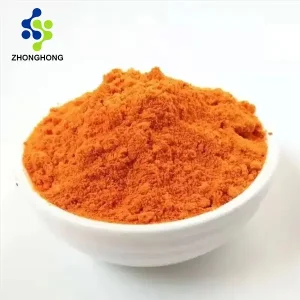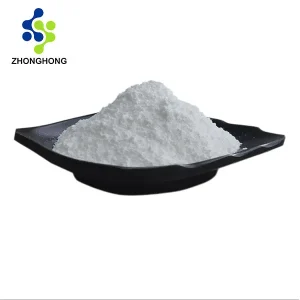Trehalose: Nature’s Protective Sugar – Ultimate Guide by Zhonghong Tech
1. What is Trehalose?
Trehalose (α-D-glucopyranosyl α-D-glucopyranoside) is a naturally occurring, non-reducing disaccharide sugar composed of two glucose molecules. Renowned for its exceptional stabilizing properties, it acts as a bioprotectant for cells and biomolecules under stress conditions like dehydration, heat, and freezing. Its unique glycosidic bond (1,1-alpha linkage) confers high stability and low reactivity.
2. Product Source, Chemical Properties & Identifiers
Source: Primarily derived through enzymatic hydrolysis of starch (from corn, tapioca, potatoes) using trehalose synthase. Also found naturally in mushrooms, honey, algae, and yeast.
Chemical Formula: C₁₂H₂₂O₁₁
CAS Number: 99-20-7
Molecular Formula (MF): C12H22O11
Molecular Weight (MW): 342.30 g/mol
EINECS Number: 202-739-6
Key Properties:
White crystalline powder
Mild sweet taste (~45% sweetness of sucrose)
High glass transition temperature (Tg)
Low hygroscopicity
Excellent chemical & thermal stability
Non-reducing sugar (Maillard reaction inert)
High water retention capacity
3. What is the Best Trehalose? Key Considerations
The “best” trehalose prioritizes purity, origin, compliance, and intended application. Zhonghong Tech sets the benchmark:
Key Ingredient: High-Purity Anhydrous Trehalose (C12H22O11)
Primary Efficacy & Health Benefits (Compliant):
Biostabilization: Protects proteins, enzymes, cells, and lipids from denaturation during drying, freezing, and heating (crucial for pharmaceuticals & diagnostics).
Dental Health: Non-cariogenic – does not promote tooth decay (EFSA, FDA approved).
Energy Source: Provides sustained glucose release (4 kcal/g) with a low glycemic index (~70% of glucose).
Osmoprotection: Helps cells maintain integrity under osmotic stress.
Skin Hydration: Used in cosmetics for moisturizing and protecting skin barrier function.
Shelf-life Extension: Stabilizes flavors, colors, textures, and biologics in food & pharma.
Origin: Globally sourced non-GMO starch (e.g., EU corn, Asian tapioca), processed in China under GMP.
Usage: Food additive (baked goods, beverages, confectionery), Pharmaceutical excipient (lyophilization, biotherapeutics), Cosmetics (serums, creams), Research reagent. Typical incorporation: 1-10% w/w depending on application.
Target Audience: Food & Beverage Manufacturers, Cosmetic Formulators, Pharmaceutical Developers, Biotech Researchers, Nutraceutical Brands.
Daily Intake & Safety: Recognized as safe (GRAS by FDA, approved by EFSA, JECFA). No established ADI. Typical consumption is safe; high doses (>50g/day) may cause mild gastrointestinal discomfort in sensitive individuals.
Critical Considerations:
Purity: Essential for sensitive applications (e.g., diagnostics, injectables). Zhonghong guarantees >99.5%.
Specification Compliance: Must meet relevant pharmacopoeia (USP/Ph.Eur/JP) or food grade standards.
Residual Solvents/Enzymes: Rigorous control needed, especially for pharma.
Allergens: Ensure processing avoids major allergens if required (e.g., gluten-free).
Side Effects: Extremely rare at typical usage levels. Potential for mild laxative effect only with very high acute intake.
4. Zhonghong Investment Technology Co., Ltd.: Pioneering Bioactive Compounds
Shaanxi Zhonghong Investment Technology Co., Ltd. is a premier high-tech enterprise integrating agile R&D, collaborative innovation, integrated manufacturing, and global marketing. For 28 years, we’ve specialized in the extraction, isolation, purification, and application of potent plant-derived compounds, serving the chemical, material science, and life science sectors.
Core Expertise: Advanced extraction & purification of Natural Plant Extracts, Cosmetic Actives, Nutraceutical & Pharmaceutical Ingredients, Natural Pigments, and Plant-Based Sweeteners (like Trehalose).
Scientific Prowess (R&D Barriers):
Strategic alliances with 5 elite universities via Joint Research Labs.
Proprietary IP portfolio: 20+ patents in separation science and stabilization.
Globally unique natural compound library for discovery.
Manufacturing Excellence:
State-of-the-art analytics: U/HPLC, GC-MS, 600MHz Superconducting NMR, ICP-MS.
Purity standards exceeding industry norms by 20%+.
Strict adherence to cGMP, ISO 9001, ISO 22000 (food grade), and ICH Q7 (pharma grade) where applicable.
Global Reach: Trusted supplier network spanning 80+ countries across Asia, Europe, and the Americas. Provides bespoke ingredient solutions to multinational pharmaceutical corporations, leading research institutions, and innovative FMCG brands.
5. Trehalose: Health Benefits & Applications
Health Benefits Mechanism:
Cellular Stress Resistance: Mimics natural anhydrobiosis, stabilizing biomolecules by replacing water hydrogen bonds (“water replacement theory”) and forming vitrified matrices.
Metabolic Pathway: Hydrolyzed slowly by trehalase enzyme in the small intestine, providing sustained glucose release.
Autophagy Modulation: Emerging research suggests potential roles in cellular cleanup processes (preclinical focus).
Application Scenarios:
Food Tech: Cryoprotectant (surimi, ice cream), Texture enhancer (baked goods, rice), Flavor/aroma stabilizer (dried fruits, beverages), Natural humectant.
Pharma/Biotech: Critical lyoprotectant for vaccines, antibodies, enzymes, and diagnostic reagents in freeze-drying (lyophilization). Stabilizer for liquid formulations.
Cosmeceuticals: Moisturizing agent, Enhancer of skin barrier function, Stabilizer for sensitive actives (Vit C, peptides).
Agriculture: Seed coating protectant, Biopesticide stabilizer.
Diagnostics: Stabilizer for enzymes and antibodies in test kits.
6. Production Process: Precision Purification
Zhonghong’s high-purity trehalose production involves:
Enzymatic Conversion: Starch slurry → Maltooligosaccharides → Trehalose (using specific trehalose synthase).
Decolorization & Deionization: Removal of pigments, ions, and proteins via activated carbon and ion-exchange resins.
Crystallization: Controlled crystallization for uniform particle size distribution.
Ultrafiltration/Nanofiltration: Advanced membrane separation for precise molecular weight cut-off.
Spray Drying/Crystallization: Final drying under strict humidity control to yield anhydrous crystals.
Polishing: Sieving to ensure consistent mesh size (e.g., 80-100 mesh).
7. Rigorous Quality Control (QC)
Zhonghong implements a multi-tiered QC strategy exceeding pharmacopeial standards:
Identity & Assay: Confirmed via HPLC-ELSD/RID (USP/Ph.Eur.) and FTIR. Purity guaranteed >99.5%.
Specific Rotation: Measured using polarimetry.
Residual Solvents: Monitored by Headspace GC-MS according to ICH Q3C guidelines.
Advanced Impurity Profiling: UPLC-QTOF-MS for trace-level unknown identification.
Stability Studies: Accelerated (40°C/75% RH) and long-term (25°C/60% RH) testing per ICH Q1A(R2).
Full Traceability: Batch-specific documentation from raw material to finished product.
8. Product Specification & Certificate of Analysis (COA)
Table 1: Comprehensive COA Specifications for Zhonghong Trehalose
| Category | Item | Specification | Test Method |
|---|---|---|---|
| Purity | Trehalose (Anhydrous) | ≥ 99.5% | USP/Ph.Eur. HPLC |
| Related Substances | Meet USP/Ph.Eur. | HPLC | |
| Loss on Drying | ≤ 1.5% | USP <731> | |
| Specific Rotation [α]20D | +197° to +201° | USP <781> | |
| Heavy Metals | Arsenic (As) | ≤ 0.5 ppm | ICP-MS (USP <232>/ICH Q3D) |
| Lead (Pb) | ≤ 0.5 ppm | ICP-MS (USP <232>/ICH Q3D) | |
| Cadmium (Cd) | ≤ 0.5 ppm | ICP-MS (USP <232>/ICH Q3D) | |
| Mercury (Hg) | ≤ 0.1 ppm | ICP-MS (USP <232>/ICH Q3D) | |
| Pesticides | Total Pesticides | ≤ 0.01 ppm (Individual) | GC-MS/MS, LC-MS/MS (EU 396/2005) |
| ≤ 0.05 ppm (Sum) | |||
| Microbiology | Total Aerobic Count | ≤ 1000 CFU/g | USP <61>, EP 2.6.12 |
| Yeast & Molds | ≤ 100 CFU/g | USP <61>, EP 2.6.12 | |
| E. coli | Absent in 10g | USP <62>, EP 2.6.13 | |
| Salmonella spp. | Absent in 25g | USP <62>, EP 2.6.13 | |
| Staph. aureus | Absent in 1g | USP <62> | |
| Other | Sulfated Ash | ≤ 0.1% | USP <281> |
| Appearance | White crystalline powder | Visual | |
| Solubility (10% soln.) | Clear, colorless solution | Visual | |
| pH (10% soln.) | 5.0 – 7.0 | USP <791> |
9. Packaging & Logistics
Primary: Food-grade polyethylene liners.
Secondary: Robust 25kg fiber drums or kraft paper bags. Custom packaging available (e.g., vacuum-sealed foil bags for hygroscopic grades).
Logistics: Shipped globally via air/sea freight under controlled conditions (cool, dry). Compliant with IMDG/IATA regulations. MOQ typically 25kg; samples available.
10. Research Frontiers & Challenges
Frontiers: Exploring trehalose’s role in autophagy induction for neurodegenerative diseases, enhancing bioavailability of poorly soluble drugs (cocrystallization), next-gen mRNA vaccine stabilization, and novel biomaterial preservation.
Challenges: Cost-effective large-scale enzymatic production optimization, demonstrating clinical efficacy for novel therapeutic claims, regulatory pathways for new high-value applications.
11. Frequently Asked Questions (FAQ)
Q: Is trehalose natural? A: Yes, it occurs naturally. Commercial trehalose is typically produced enzymatically from starch.
Q: Is trehalose safe? A: Yes, it has GRAS status (FDA) and is approved globally (EFSA, JECFA) for food use. It’s well-tolerated.
Q: Does trehalose spike blood sugar? A: It has a lower Glycemic Index (~70) than glucose (100) and sucrose (65), causing a slower, more sustained rise.
Q: Why use trehalose instead of sucrose? A: Superior stability, lower reactivity (non-reducing), better cryo/lyoprotection, lower cariogenicity, and mild sweetness.
Q: Can trehalose be used in vegan products? A: Absolutely, as it’s derived from plant starch and produced enzymatically.
Q: How does trehalose stabilize proteins? A: Primarily through the “Water Replacement Hypothesis,” forming hydrogen bonds with biomolecules, and vitrification during drying.
Q: What is the shelf life? A: Typically 3 years when stored sealed in a cool, dry place (<25°C, <65% RH).
12. Where to Buy & Request Samples
Source premium, high-purity Trehalose directly from the manufacturer:
Website: Explore our full product portfolio at aiherba.com
Contact for Quotes & FREE Samples: Reach our technical sales team at liaodaohai@gmail.com for competitive pricing, technical data sheets (TDS), and sample requests tailored to your application (Food, Pharma, Cosmetic, Research).
13. Conclusion
Trehalose stands as a versatile and scientifically validated biomolecule, offering unparalleled stabilization benefits across food, pharmaceutical, cosmetic, and research industries. Its natural origin, safety profile, and unique physicochemical properties make it an indispensable tool. Shaanxi Zhonghong Investment Technology Co., Ltd., leveraging 28 years of expertise, cutting-edge purification technology (validated by Superconducting NMR and UPLC-QTOF-MS), and stringent quality control exceeding pharmacopeial standards, delivers trehalose of exceptional purity (>99.5%) and consistency. Partner with Zhonghong for reliable, high-performance trehalose solutions backed by deep technical support and a global supply chain. Contact us today via liaodaohai@gmail.com or visit aiherba.com for samples and specifications.
14. References
International Trehalose Association. (n.d.). Scientific Resources. [Link]
European Food Safety Authority (EFSA). (2011). Scientific Opinion on the substantiation of health claims related to trehalose… EFSA Journal, 9(4), 2073.
Ohtake, S., & Wang, Y. J. (2011). Trehalose: current use and future applications. Journal of Pharmaceutical Sciences, 100(6), 2020-2053.
Chen, A., & Tait, A. R. (2019). Trehalose as a promising therapeutic candidate for neurodegenerative disorders. Translational Neurodegeneration, 8(1), 1-10.
USP-NF. (2024). Monograph: Trehalose. United States Pharmacopeial Convention.
European Pharmacopoeia (Ph. Eur.) 11th Edition. (2024). Monograph 01/2024:0000.
Zhonghong Tech. (2024). Internal Quality Control Protocols & Analytical Reports. Shaanxi, China.






评价
There are no reviews yet.